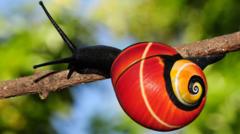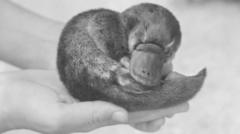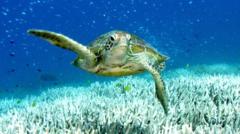In an effort to save the endangered Polymita snails, renowned for their colorful shells, a collaboration between Cuban and UK biologists begins to tackle the threats posed by the shell trade and environmental changes.**
Team Sets Out to Rescue Endangered Polymita Snails from Extinction**

Team Sets Out to Rescue Endangered Polymita Snails from Extinction**
Researchers unite to protect Cuba's vibrant Polymita tree snails amid ongoing threats from shell collectors and habitat loss.**
Researchers are rallying to protect the Polymita tree snails, renowned for their astonishing beauty, which are now under significant threat due to over-collection and habitat loss. Found solely in Eastern Cuba, these vibrant snails—with their eye-catching, patterned shells—have become targets for collectors. The appeal of these shells, treasured for their use in decorative jewelry, contributes to the species’ decline as conservationists warn that the shell trade is pushing these magnificent creatures towards extinction.
A collaborative effort has been launched between Cuban biologists and experts from the University of Nottingham, aiming to save all six known Polymita species. Among them, the Polymita sulphurosa stands out with its striking lime green shell highlighted with vibrant blue flame patterns and bands of orange and yellow. This species is critically endangered, raising alarms about the impacts of illegal shell trading.
Prof. Angus Davison, an evolutionary geneticist leading the research in the UK, highlights the irony that the very characteristics making the snails fascinating are also leading to their demise. “The beauty of these snails attracts collectors, resulting in unsustainable collection practices,” he explained. Recent online searches revealed numerous platforms offering Polymita shells for sale, highlighting the pressing need to protect these endangered animals.
Despite international conservation laws such as the Convention on International Trade in Endangered Species, those laws are challenging to enforce. While it is illegal to export Polymita snails or shells from Cuba without permits, selling them globally remains permissible. This loophole, combined with threats of climate change and deforestation in their native habitats, prompts serious concerns among conservationists. Prof. Davison warns that continued collection of the snails could rapidly lead to their extinction in specific locales.
In response, Prof. Davison is working in tandem with Prof. Bernardo Reyes-Tur from the Universidad de Oriente in Santiago de Cuba. Their mutual goal is to deepen understanding of the snails' evolution and leverage that scientific insight for conservation efforts. Prof. Reyes-Tur faces his unique challenges, including power outages and extreme heat, as he has initiated a captive breeding program in his own home.
Though the snails have yet to breed in captivity, he remains hopeful and committed to their survival, overcoming daily obstacles. Meanwhile, in the highly equipped laboratories at the University of Nottingham, dynamic genetic research is underway. The team is working diligently to decode the genetic makeup of the snails to better comprehend their species interrelationships and the genetic elements that influence their distinctive colors.
The overarching aim is to unveil the biological secrets that could aid in preserving these spectacular snails before they are lost forever. “Eastern Cuba is the only location where these snails thrive, housing the experts who understand them best," Prof. Davison emphasized. "We aspire to use our genetic findings to foster their conservation and ensure their survival."



















